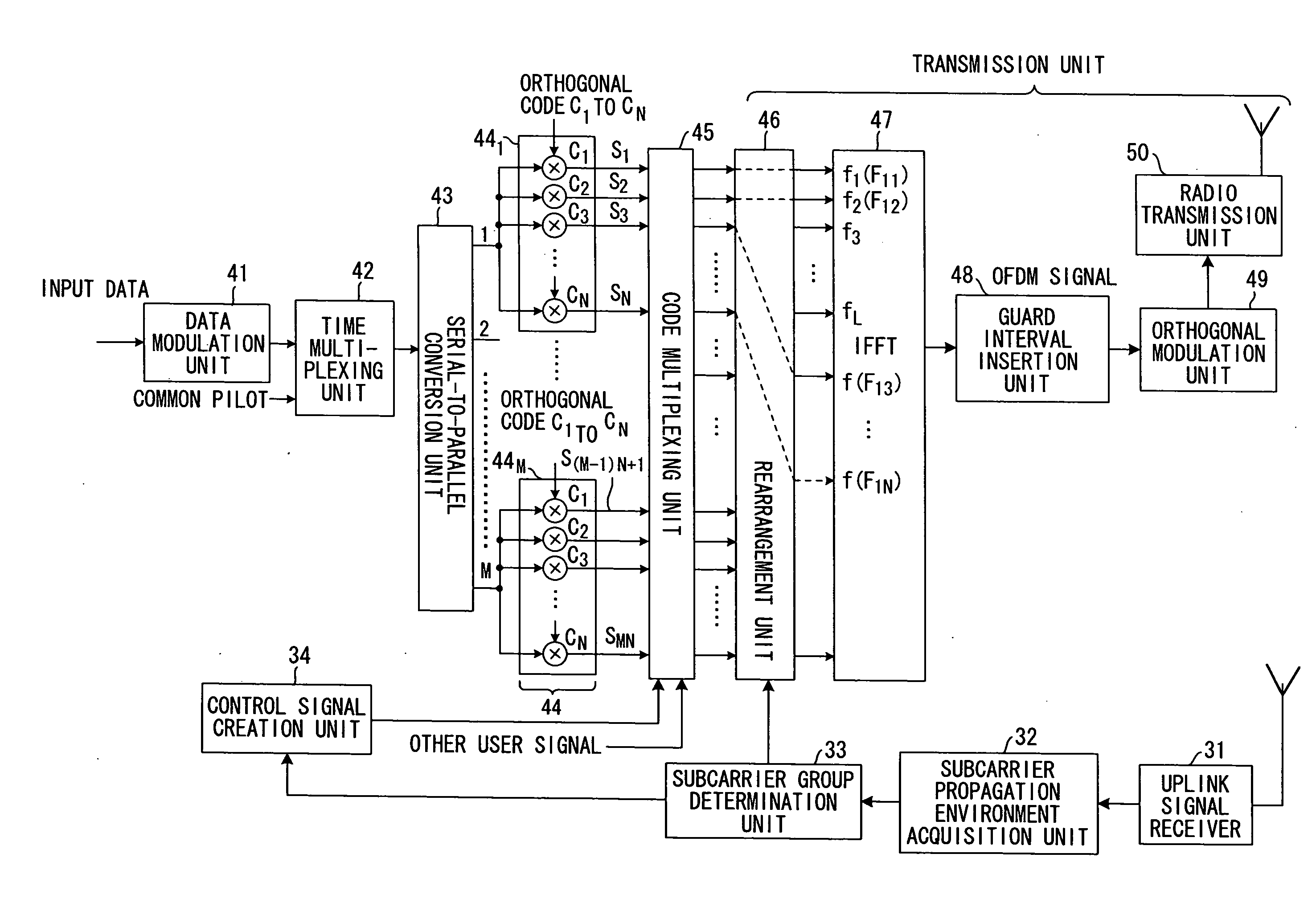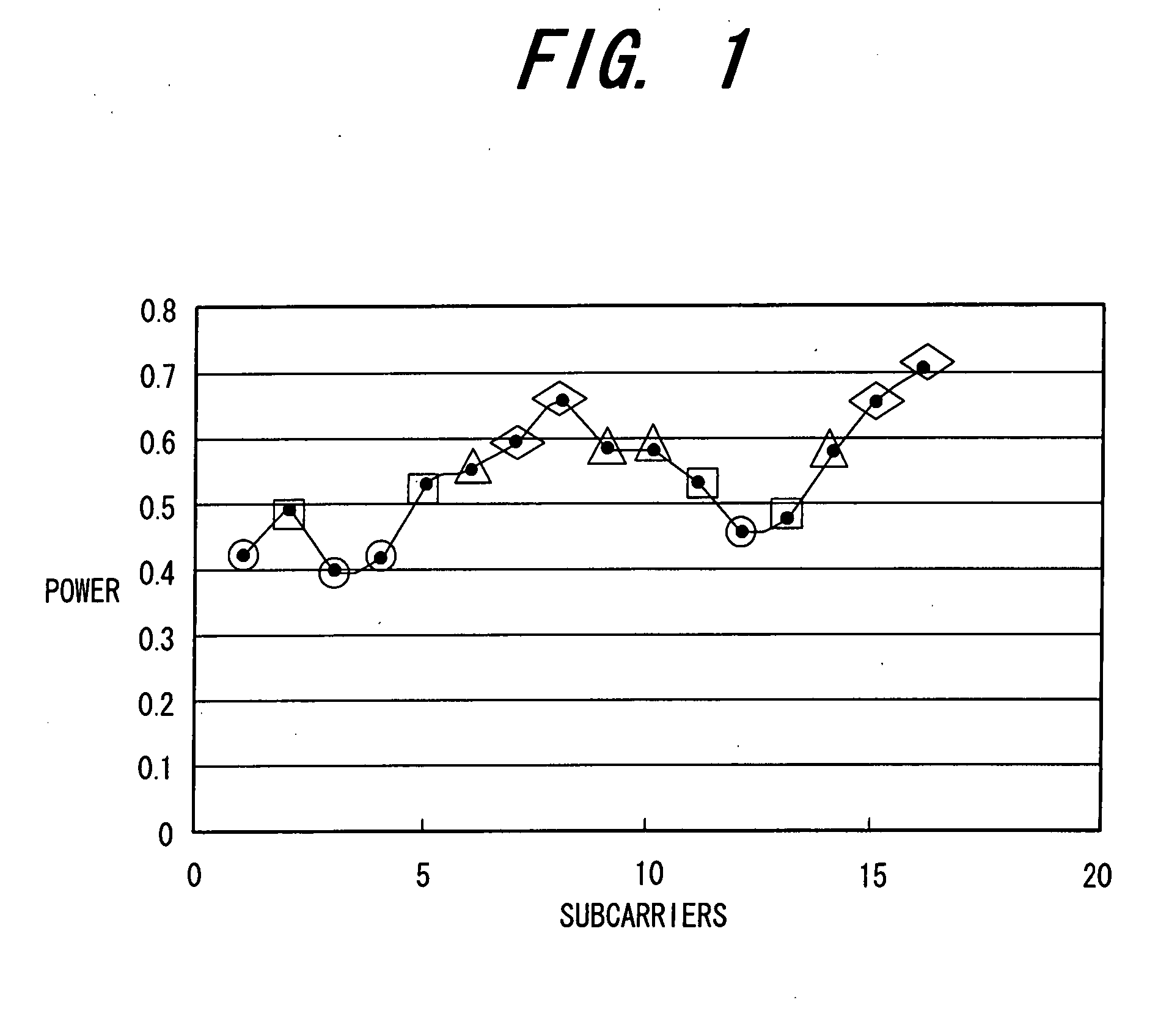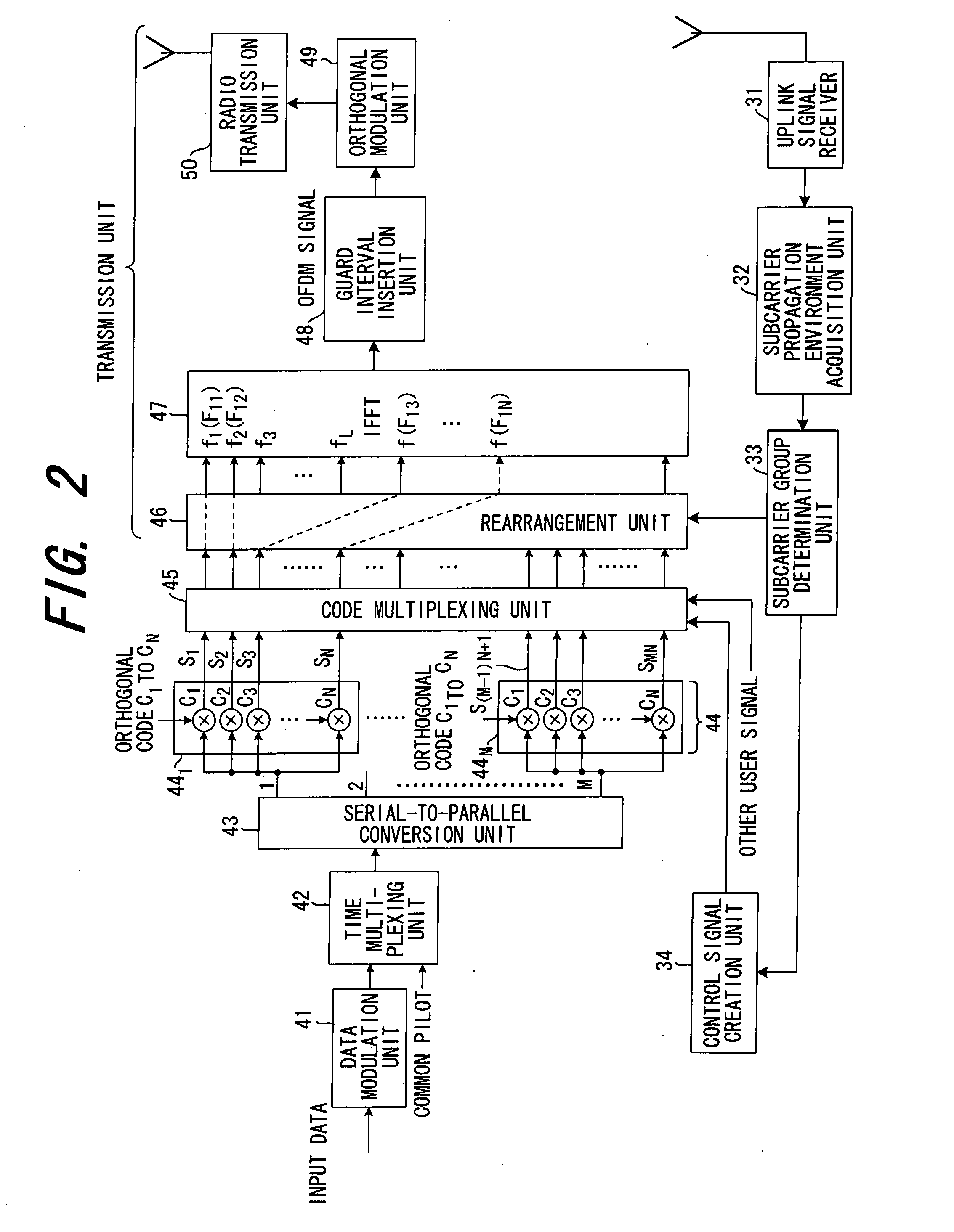Transmission method and transmission apparatus in an OFDM-CDMA communication system
a transmission method and communication system technology, applied in multi-frequency code systems, multiplex communication, orthogonal multiplexes, etc., can solve problems such as inability to properly perform demodulation, poor reception characteristics, and inability to reduce the frequency of reception, so as to prevent interference with signals, reduce fluctuation in reception amplitude, and prevent loss of orthogonality
- Summary
- Abstract
- Description
- Claims
- Application Information
AI Technical Summary
Benefits of technology
Problems solved by technology
Method used
Image
Examples
embodiment 1
(B) Embodiment 1
[0046]FIG. 2 is a drawing showing the construction of a transmission apparatus (base station) in an OFDM-CDMA communication system of a first embodiment of the invention. This transmission apparatus multiplies each symbol of M number of symbols by spreading code that corresponds to a spreading factor to create a plurality of subcarrier components, and transmits the plurality of subcarrier components by corresponding subcarriers.
[0047] An Uplink signal receiver 31 receives a signal that is sent from a mobile station, and a subcarrier propagation environment acquisition unit 32 demodulates the signal from the mobile station and acquires reception environment information for each subcarrier, such as the reception power (square of the reception amplitude) or reception quality of each subcarrier and inputs the result to a subcarrier group determination unit 33. The subcarrier group determination unit 33 divides all of the subcarriers into a first to Mth group of N subcar...
embodiment 2
(C) Embodiment 2
[0059] In the first embodiment, the receiving apparatus (mobile station) measures the propagation environment (reception power) of a subcarrier, and notifies the transmission apparatus (base station) of it in an Uplink signal. This method is particularly useful in the FDD (Frequency Divisional Duplex) method, since the Uplink and Downlink frequencies differ. However, in the TDD (Time Divisional Duplex) method, the Uplink and Downlink frequencies are the same, so it is possible for the propagation environment of the Downlink signal to be measured on the base station side. This method has a merit in that it is not necessary to exchange propagation environment information between the mobile station and the base station.
[0060]FIG. 4 is a drawing showing the construction of the transmission apparatus in an OFDM-CDMA communication system of a second embodiment of the invention, where the same reference numbers are used for parts that are the same as those of the first emb...
embodiment 3
(D) Embodiment 3
[0061] The conventional method of allotting a total of M×N number of subcarrier components, which are obtained by multiplying M number of symbols by channel ization code, to M×N number of subcarriers in the order of frequency is useful in that the amount of transmitted information is decreased since it is not necessary to exchange the corresponding relation between the subcarrier components S1 to SMN and subcarriers f1 to fMN between the base station and the mobile station.
[0062] Therefore, when the communication environment is good, M×N number of subcarrier components are allotted to each subcarrier in order of frequency, and when the communication environment is not good, M×N number of subcarrier components are allotted to subcarriers based on the group divisions of the first embodiment.
[0063] Fluctuation in the frequency selective fading is intimately related to multipaths. As shown on the left side of (A) and (B) of FIG. 5, for multipaths, the power is obtained...
PUM
 Login to View More
Login to View More Abstract
Description
Claims
Application Information
 Login to View More
Login to View More - R&D
- Intellectual Property
- Life Sciences
- Materials
- Tech Scout
- Unparalleled Data Quality
- Higher Quality Content
- 60% Fewer Hallucinations
Browse by: Latest US Patents, China's latest patents, Technical Efficacy Thesaurus, Application Domain, Technology Topic, Popular Technical Reports.
© 2025 PatSnap. All rights reserved.Legal|Privacy policy|Modern Slavery Act Transparency Statement|Sitemap|About US| Contact US: help@patsnap.com



